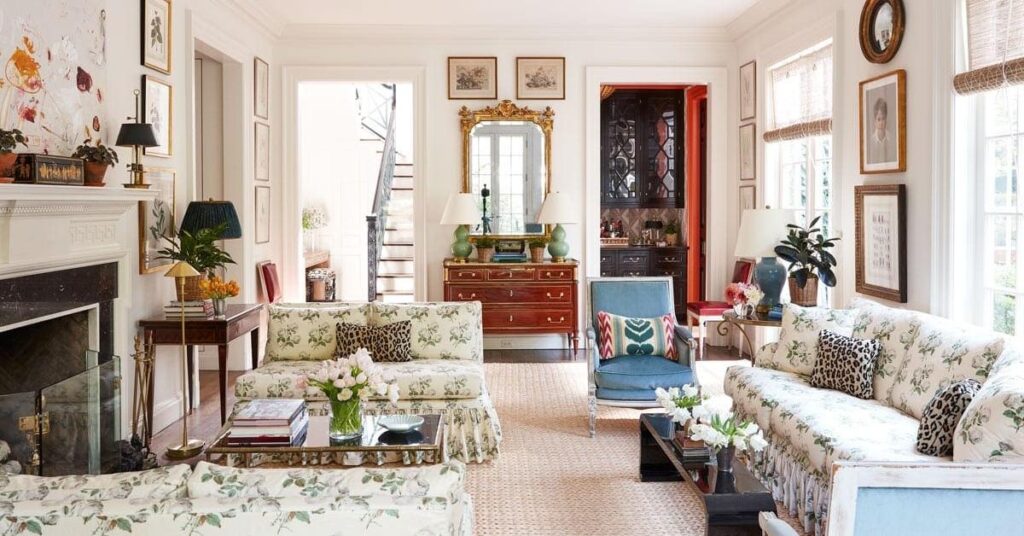In the ever-evolving world of interior design, the trend of mixing modern and vintage elements has continued to gain significant popularity. This eclectic approach to design combines the best of both worlds. Creating spaces that are aesthetically pleasing, while being rich in character and history.
It can be challenging to achieve the perfect balance between modern and vintage, but when done correctly, it can create a harmonious and unique environment.
Understanding Modern and Vintage Styles
Modern design is characterised by clean lines, minimalism and functionality. Often incorporating neutral colour palettes, open spaces and focusing on natural light. Typically, modern furnishing is sleek and unadorned; there’s an emphasis on simplicity and practicality. The materials used in modern design usually include glass, metal and concrete, which contributes to a contemporary, and sometimes industrial, aesthetic.
Vintage design, on the other hand, celebrates the charm and elegance of the past. This style features pieces from earlier decades; often highlighting intricate detail and craftsmanship. Vintage items can range from mid-century modern furniture to antique décor from the Victorian era. Wood, brass and textiles with fine patterns are commonly used. Vintage design also tends to embrace bold colours and ornate details, which create a warm and inviting atmosphere.
The Art of Balance
You’ll want to start with a neutral colour palette to provide a versatile foundation. Allowing vintage pieces to stand out without overwhelming your space. Shades of white, beige, grey and taupe can create a serene backdrop for the mix of styles. Neutral walls and flooring offer flexibility to incorporate modern and vintage elements seamlessly.
While the goal is to mix both styles, it can be helpful to choose one as the dominant theme. This allows you to create a cohesive space, ensuring that it doesn’t become cluttered or chaotic. For example, if you prefer a modern look, you can use the vintage pieces as accent items or vice versa.
Like with most things, you want to focus on quality over quantity. You need to avoid overloading your space with too many pieces from either style. Instead, you should curate a selection of high-quality items that complement each other. Think about a few well-chosen vintage pieces that can add character and charm to a modern space without making it feel like a museum. Similarly, a touch of modernity can enhance a vintage room without detracting from its nostalgic appeal.
Another way to balance modern and vintage design is through flooring. Wood flooring is renowned for its timeless appeal. For a vintage touch, you can choose distressed or reclaimed wood with visible grain and texture. Pairing this with modern furnishings will then create a striking contrast. Vinyl flooring is a cheaper alternative, which can mimic the look of natural materials.
Combining varied materials and textures is another effective way to blend modern and vintage styles. For example, you could pair a sleek glass coffee table with a vintage leather sofa or mix a modern metal bed frame with antique wooden nightstands. This interplay of materials will add depth and interest to your space as it visually engages the environment.
An essential part of any mixed-style home is the incorporation of statement pieces. These are items that draw the eye, capturing your attention and serving as focal points. Think about a vintage chandelier, a modern abstract painting or an antique rug; all of which serve this purpose. Statement pieces not only add visual interest, but they also help to anchor the design, providing a central theme which other elements can revolve around.
You need to pay attention to the scale and proportion of your furniture and décor items. Ensuring they’re harmonious, which is crucial in achieving balance. You can mix large vintage pieces with smaller modern accessories, or vice versa, to keep this sense of equilibrium. But be mindful of the dimensions of your rooms; overcrowding them will disrupt this balance.
Accessories offer an excellent opportunity to blend these two styles together. You can use items like throw pillows, vases, mirrors and artwork to bridge the gap between eras. For example, modern geometric cushions can be paired with a vintage floral sofa, or you can add an antique mirror to a contemporary hallway for a charming effect.
Don’t forget to include personal accessories too! Incorporate items that have sentimental value or reflect your personality, regardless of their style. Think about family heirlooms, travel souvenirs or pieces of art you love; these can contribute to the overall design. Adding a layer of authenticity and warmth to your balance of modern and vintage.
Modern and Vintage Design
Mixing modern and vintage styles is an art that requires a thoughtful and curated approach. Using a neutral base, dominant style, quality items and so on, you can create a harmonious balance that reflects both contemporary sophistication and timeless charm.
This eclectic blend not only creates a visually appealing space, but it also tells a story as it combines the best of the past and present. Whether you’re renovating a single room or designing an entire home, this fusion of modern and vintage elements can result in an utterly unique and captivating environment. With careful planning and creativity, you can master the art of mixing modern and vintage; achieving a perfect balance that stands the test of time.







